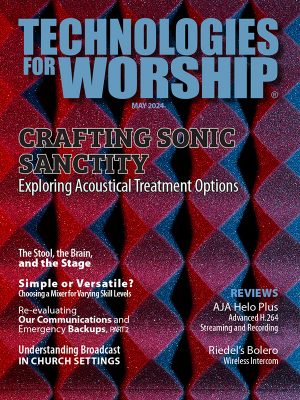Properly inspecting your truss will ensure that it is in safe working condition each time the truss is used.
The Entertainment Services and Technology Association’s Technical Standard Program developed the ANSI Entertainment Technology Standard E1.2 which contains minimum required inspection routines and guidelines for truss inspection. This standard is available for download at www.ESTA.org.
ANSI E1.2 defines three types of truss inspections:
- Initial Inspection
- Frequent Inspection
- Periodic Inspection
Initial inspection is required when truss is acquired, whether purchased new from the manufacturer or used. Dated records shall be kept on file by the owner and maintained for the duration of the possession of the truss.
Frequent inspections are defined as visual inspections to be conducted prior to each use and immediately after any incident that may have in any way caused damage to the system or truss. Records are not required to be kept for Frequent Inspections.
Initial and Frequent Inspections are visual inspections and shall be performed by a competent person with the following items inspected:
- Geometry of truss for twisting, racking or bending
- Truss members for dents, bends, abrasions, or missing members
- Truss connections for flatness or deformation
- Fastening hardware for proper grade, deformation or excessive wear
- Welds for breaks, cracks, or deformation
Periodic inspections are defined as annual visual inspections with dated records to be kept on file with the owner. Periodic inspections shall be performed by a competent person with the following items inspected:
- Geometry of truss for twisting, racking, bending, sweep, or camber
- Truss members for dents, bends, abrasions, or missing members
- Connection plates for flatness, deformation, excessive wear, or corrosion
- Pinned connectors for abrasion, deformation, and method of connection to the truss
- Fastening hardware for proper grade, deformation or excessive wear
- Welds for cracks and abrasion
- Any weld thought to possibly be defective shall have additional non-destructive testing performed by a qualified person.
- Non-destructive testing may include dye penetrant testing.
Section 2 of the E1.2 standard provides definitions for the inspection items listed above.
During the inspection process it is important to know what is considered damage that would warrant removing the truss from service.
Refer to manufacturer guidelines for abrasion or loss of material from dings, scrapes, gouges, scratches or C-clamps. Xtreme Structures recommends that material loss shall not exceed 25% of the wall thickness of the damaged member of the truss.
A truss with any sign of dents, holes, cuts, bent members or plates, cracked or broken welds, corrosion, or excessive wear around connections shall be considered damaged.
Xtreme Structures recommends a tolerance of 1/8” out of square for truss exhibiting twist, racking, bending, sweep, or camber
Damaged truss should be noted in the inspection documents, clearly marked, and removed from service immediately.
A qualified person shall perform and document an assessment of the truss to determine if it can be repaired and returned to service. Any truss deemed to have irreparable damage shall be permanently removed from service.
Repairs to damaged truss shall be made according to the manufacturer’s recommendations by a qualified person. Repairs involving welds shall be performed by an AWS certified welder.
The inspection criteria in this video is provided for a variety of uses that are generally confined to the entertainment industry and apply to a range of structural products subjected to normal atmospheric conditions. Properly inspecting truss is key to maintaining a safe working environment around structural components.


